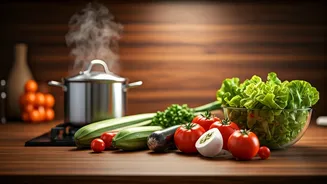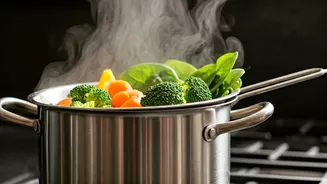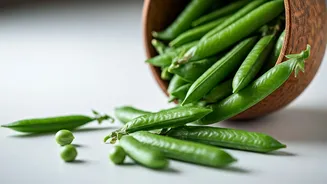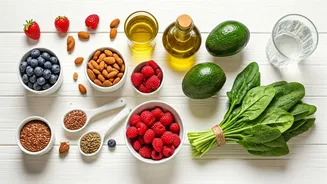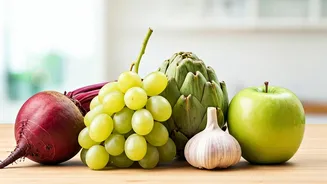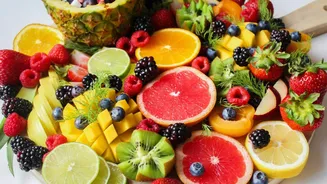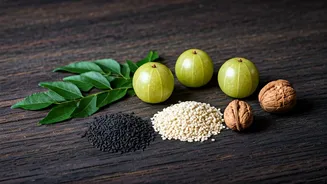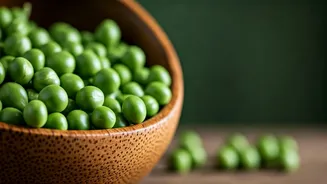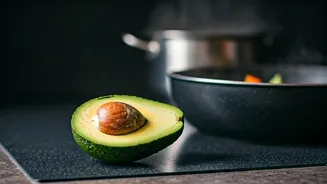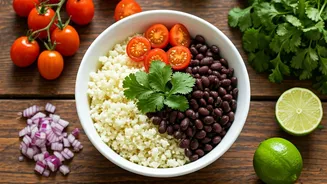Over-Washing Produce
One of the initial steps in food preparation involves washing fruits and vegetables, yet overdoing this can strip away vital nutrients. Vigorous scrubbing
or soaking produce for an extended period, particularly leafy greens and delicate items, can lead to the loss of water-soluble vitamins like vitamin C and B vitamins. These nutrients dissolve in water and are easily lost during prolonged washing. To prevent this, gently rinse produce just before use. Avoid soaking for extended periods, as this can leach out nutrients. For vegetables with a waxy coating, consider using a vegetable brush to gently remove dirt without excessive scrubbing. Remember, the goal is to clean without sacrificing the nutritional value of your fresh ingredients.
Incorrect Peeling Techniques
Peeling fruits and vegetables can be a common practice, but it's important to be mindful of how you do it. Many essential nutrients are concentrated just beneath the skin of fruits and vegetables. When you peel too deeply, you inadvertently discard a significant portion of these beneficial compounds. For instance, the skin of apples and potatoes is rich in fiber and antioxidants. Aim to peel only the outermost layer, or better yet, consume the skin whenever possible. If peeling is necessary, use a vegetable peeler to remove the thinnest possible layer. For certain foods like carrots and cucumbers, light scrubbing and washing are often sufficient, allowing you to retain the nutrient-rich skin. This approach helps maximize the intake of vitamins, minerals, and fiber.
Excessive Cooking Times
Overcooking vegetables is a frequent kitchen error that can lead to significant nutrient loss. Prolonged exposure to heat can break down heat-sensitive vitamins, such as vitamin C and B vitamins, leading to a reduction in their nutritional value. Steaming, stir-frying, or blanching vegetables briefly are excellent alternatives. These methods help retain nutrients while still achieving the desired texture and flavor. Microwaving can also be a quick and effective way to cook vegetables with minimal nutrient loss, as the cooking time is usually shorter. When boiling, use minimal water and cook until tender-crisp. Avoid overcooking, as it diminishes the benefits of your vegetables.
Using the Wrong Cooking Oils
Choosing the right cooking oil is critical for both the flavor and nutritional integrity of your dishes. Heating oils to high temperatures can cause them to break down, forming harmful compounds and reducing their nutritional value. For high-heat cooking methods like frying and searing, opt for oils with a high smoke point, such as avocado oil, refined olive oil, or sunflower oil. These oils remain stable at higher temperatures. Avoid using oils with low smoke points, such as extra virgin olive oil, for these methods. They are better suited for lower-temperature cooking or as a finishing drizzle. Properly selecting your cooking oil can protect the nutrients in your food and enhance your meal's overall healthfulness.
Improper Storage Practices
Proper food storage is essential for preserving the nutritional value of your ingredients. Exposure to air, light, and fluctuating temperatures can cause nutrients to degrade. Store fruits and vegetables in the appropriate environment to maintain their freshness and nutrient content. For example, leafy greens should be stored in the refrigerator, wrapped in a damp paper towel to prevent wilting. Berries and other delicate fruits should be stored in a breathable container in the fridge. Avoid storing vegetables in direct sunlight or at room temperature for extended periods. Ensure your pantry is cool, dry, and dark for storing dry goods like grains and legumes. Proper storage helps maintain the vitamin and mineral content and keeps your food safe from spoilage.
Incorrect Knife Techniques
The way you chop and cut vegetables can impact their nutritional integrity. Chopping vegetables too finely can increase the surface area exposed to air and light, leading to nutrient loss, especially for vitamins that are sensitive to oxidation. For example, the enzyme myrosinase in cruciferous vegetables like broccoli needs to be activated to release sulforaphane, a beneficial compound. Chopping these vegetables finely can activate the enzyme too early, causing the sulforaphane to be lost before consumption. Instead, use a sharp knife to cut vegetables into larger, more uniform pieces. This minimizes surface exposure and helps retain more nutrients. Cutting vegetables just before cooking also helps preserve their nutritional value by reducing exposure to air and light.
Not Utilizing Cooking Water
When cooking vegetables by boiling or steaming, the cooking water often becomes infused with water-soluble vitamins and minerals. Discarding this water means you're throwing away a significant portion of the nutrients. Instead, consider ways to utilize this nutrient-rich cooking water. Use the vegetable broth in soups and stews. Add the water to sauces or gravies to boost the flavor and nutritional content. When steaming, you can collect the condensation that drips down. This can be added to other dishes. By making the most of the cooking water, you can ensure that you’re extracting maximum value from your ingredients and reducing food waste. This simple practice helps you to enhance the overall nutritional value of your meals.
